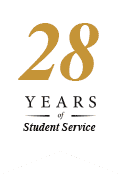by Bryan Alary

Doug Gross (right) and his UAlberta research team developed an interview-based test to ensure injured workers are ready to return to the job. The test is as effective as physical assessments, without the risk of painful flare-ups. Credit: Richard Siemens
A University of Alberta research team has designed a new approach to ensure injured workers are fit to return to their jobs, sparing them lengthy and painful tests that can pose risks of pain flare-ups.
U of A researchers designed a novel interview format to gauge when injured workers are physically able to resume their duties. During a randomized controlled trial, the interview approach proved just as effective as functional evaluations now used in Alberta that see workers perform tasks similar to their work duties-physical testing that is typically lengthy and can aggravate pain.
One of the biggest problems clinicians face when treating injured workers is making the decision on when they’re able to return to work without risk of further pain or reinjury, said Doug Gross, an associate professor of physical therapy in the Faculty of Rehabilitation Medicine. Functional testing is timely, expensive and often painful for workers. Our method gives clinicians another tool to get individuals back on track.
Gross has spent more than a decade studying the issue, focusing on musculo skeletal conditions. Instead of observing patients as they perform tasks such as lifting, walking or climbing stairs, he and colleague Alexander Assante, a program manager with Alberta Health Services’ Community Accessible Rehabilitation, developed detailed questions focusing on a patient’s injury history and physical condition, recent functional abilities, work demands and what they think they can handle physically.
Most people have sense of what they can or can’t do but are looking for expert advice. This format can be an interventional tool that helps them decide and feel comfortable with what they’re capable doing, said Gross, whose research is affiliated with WCB-Alberta Millard Health, a provider of occupational rehabilitation and disability management services.
More than 400 workers with muscle, ligament, tendon and bone injuries participated in the trial. Half were chosen at random and tested using standard physical evaluations; the rest underwent interviews conducted by trained clinicians.
Researchers found no differences in patient outcomes between the physical tests-which can take up to eight hours and require a trip to a clinic-and the two-hour interview format, which, Gross says, can be done almost anywhere, potentially including phone or video calls. Distance interviews still need to be tested, he cautions, but theoretically they could benefit rural patients and those working in remote areas, including Alberta’s oilpatch.
That would be huge for an injured worker in Fort Mc Murray who otherwise would have to come to Edmonton.
Gross said his results have generated interest not only in Alberta, but also among academics in Australia, Europe and at Work Safe BC, which helped fund the work. It’s the type of research made possible by being at the U of A and having strong relationships in the community through WCB-Alberta Millard Health.
This has the potential to do considerable good for patients, employers, insurance providers and really the economy as a whole.
Explore further:Online tool aids clinicians’ efforts to treat injured workers
Provided byUniversity of Alberta



